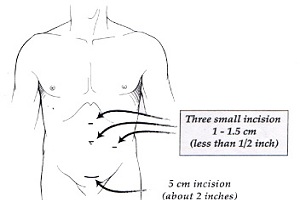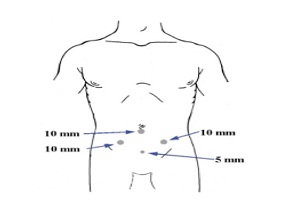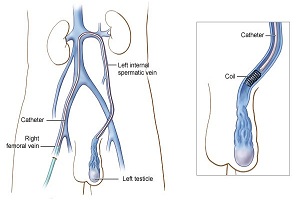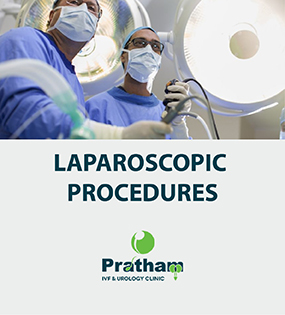
Pratham IVF And Urology
×
- Home
- about us
- services
Laparoscopy is a type of surgery that uses smaller cuts than you might expect.
The process takes its name from the laparoscope, a slender tool that has a tiny video camera and light on the end. When a surgeon inserts it through a small cut and into your body, they can look at a video monitor and see what’s happening inside you. Without those tools, they’d have to make a much larger opening. Thanks to special instruments, your surgeon won’t have to reach into your body, either. That also means less cutting.
This Is The List Of Laparoscopy Surgeries Done At Pratham IVF & Urology Clinic:


Laparoscopic nephrectomy is an effective way to remove a diseased or cancerous kidney. Laparosopic nephrectomy is a minimally invasive technique, so when compared to conventional open surgery, it can mean significantly less post-operative pain, a shorter hospital stay, earlier return to work and daily activities, a more favorable cosmetic result and outcomes identical to that of open surgery.

Laparoscopic ureterolithotomy is a procedure to remove stones from the ureter. The ureter is a tube between the kidney and the bladder. Urine passes down to the bladder through this tube.
Laparoscopic procedures use small incisions and specialized tools. This helps to avoid large incisions that are used during open surgery.
Reasons for Procedure
Ureterolithotomy is used to remove stones in a ureter that:

Possible Complications
Problems from the test are rare. However, all procedures have some risk. Your doctor will review potential problems, like:
Laparoscopic pyeloplasty is a way to perform reconstructive surgery of a narrowing or scarring where the ureter (the tube that drains urine from the kidney to the bladder) attaches to the kidney through a minimally invasive procedure.
This operation is used to correct a blockage or narrowing of the ureter where it leaves the kidney. This abnormality is called a ureteropelvic junction (UPJ) obstruction which results in poor and sluggish drainage of urine from the kidney. UPJ obstruction can potentially cause abdominal and flank pain, stones, infection, high blood pressure and deterioration of kidney function.
When compared to the conventional open surgical technique, laparoscopic pyeloplasty has resulted in significantly less post-operative pain, a shorter hospital stays, earlier return to work and daily activities, a more favourable cosmetic result and outcomes identical to that of the open procedure.

Orchiopexy is a surgery to lower the testicles into the scrotum. Testicles should move down from the belly into the scrotum before birth. Some boys are born with 1 or both testicles still inside the belly or groin. This is called undescended testicles.
Reasons for Procedure
Doing this procedure may help:

Possible Complications
Problems from the procedure are rare, but all procedures have some risk. Your child’s doctor will review possible problems such as:
What to Expect
Laparoscopic ureteral reimplantation is surgery to reposition a ureter. The ureter is a tube between the kidney and the bladder. It allows urine to pass down to the bladder.
Laparoscopic procedures use small incisions and specialized tools. This helps to avoid large incisions that are needed with open surgery.
Reasons for Procedure
Some ureters are not positioned correctly in the bladder. This can make it difficult for urine to flow into the bladder. Ureteral reimplantation may be done to reposition ureters that:

Possible Complications
Problems from the test are rare. However, all procedures have some risk. Your doctor will review potential problems, like:
A varicocele is an enlargement of the veins in your scrotum. Varicocelectomy is a surgery performed to remove those enlarged veins. The procedure is done to restore proper blood flow to your reproductive organs.
When a varicocele develops in your scrotum, it can block blood flow to the rest of your reproductive system. The scrotum is the sac that contains your testicles. Because blood can’t return to your heart through these veins, blood pools in the scrotum and the veins become abnormally large. This can decrease your sperm count.

